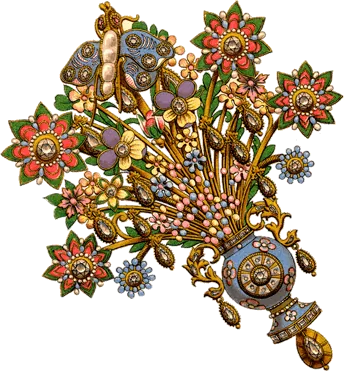The counting of the Omer (Hebrew: ספירת העומר, Sefirat HaOmer) is an important verbal counting of each of the forty-nine days between the Festival of Passover and Shavuot as stated in the Hebrew Bible: Leviticus 23:15–16.
“‘From the day after the Sabbath, the day you brought the sheaf of the wave offering, count off seven full weeks. Count off fifty days up to the day after the seventh Sabbath, and then present an offering of new grain to the Lord."
This mitzvah ("commandment") derives from the Torah commandment to count forty-nine days beginning from the day on which the Omer, an offering containing an omer-measure of barley, was offered in the Temple in Jerusalem:
"When you enter the land I am going to give you and you reap its harvest, bring to the priest an omer of the first grain you harvest. He is to wave the sheaf before the LORD so it will be accepted on your behalf; the priest is to wave it on the day after the Sabbath." (Lev. 23:10, 11)
The command to bring the first sheaf of the harvest to the Temple is of great significance to the disciples of Yeshua. It is an obscure appointment on the Biblical calendar, sometimes called the First Fruits of the Barley Harvest, but better known simply by its Biblical name, "The Omer." The Omer is a minor festival with major Messianic implications.
The Omer and the Messiah
On the same day that the Master was tried before an assemblage of priests and judges from the Sanhedrin, apostles of the Sanhedrin were sent out to a barley field not far from Jerusalem. On the same day that the Master was bound and crucified, the apostles of the Sanhedrin bound up the standing barley into bundles while it was still attached to the ground so that it would be easier to reap. (Menachot 10:3)
After the sun had set and the Sabbath was over, just hours before the Master rose from his tomb, the barley was reaped and collected in three baskets. That night the baskets of grain were carried to Jerusalem. They were delivered to the priesthood in the Temple. The baskets contained more than enough grain to constitute a full sheaf's worth: enough to fulfill the mandate of Leviticus 23:10. The Hebrew word for sheaf is omer.
The harvest ritual of gathering this barley omer was for a special first fruits offering to the LORD. According to Torah, no grain or produce from the new year's crops could be used or eaten until the first omer of grain to ripen was harvested and brought to the Temple. Barley is the first crop to ripen in Israel, so the omer was always a barley sheaf. The commandment of the barley omer served to remind Israel that the land and its produce belonged first to God. The produce of the land could not be enjoyed until God had received his due. Until the barley omer was harvested and offered in the Temple, the rest of the crops were not deemed kosher.
So it was that very night, while the Master was still in the sleep of death, that the priests in the Temple threshed, roasted and ground the barley omer into flour. All night they prepared it. Then while the Master passed those last silent hours before his awakening, the priests refined the freshly milled flour by sifting it through 13 sieves.
Before the flour was ready for the altar, the women had already discovered the empty tomb and reported it to the disciples. And while the disciples were trying to imagine what had become of the Master's body, the priesthood was busy mixing the barley flour with oil and frankincense to make it into a bread offering. As Miriam from Magdala encountered the risen Messiah in the garden, the High Priest was waving the dough before the LORD as a wave offering. He touched it to the altar and offered a portion of it on the altar as a memorial portion. The remainder of the dough was baked into loaves of unleavened barley bread to be shared among the priesthood. Along with this barley bread offering of the Omer, a single lamb was offered as a burnt offering.
By divine design, the rituals of offering the barley omer in the Temple coincided with the death and resurrection of the Yeshua.
A Subject of Dispute
The Harvest of the Barley Omer occurs sometime during the week of Unleavened Bread. It is a miniature festival within a festival. It is listed in Leviticus 23 along with all the appointed times of God. The exact date for the harvest of the barley omer, however, has been a subject of dispute for thousands of years.
The point of contention lies in the ambiguity of the Hebrew text. Verse 11 says the Omer is to be brought "on the day after the Sabbath." It is not clear whether the verse is referring to the weekly Sabbath or the special Sabbath which begins the week of Unleavened Bread. If the verse refers to the weekly Sabbath, then the Omer would always fall on a Sunday but would have no fixed calendar date. If, however, the verse refers to the special Sabbath of Unleavened Bread then the First Fruits of the Barley would always fall on the sixteenth day of the First Month but would not fall on a fixed week day.
In ancient times, the meaning of the verse was hotly debated between the Pharisees and a sect of the Sadducees. The Sadducees understood the "day after the Sabbath" as being Sunday. The Pharisees argued against the literal reading of Sadducees. The Pharisees ultimately prevailed, and as a result modern Judaism contends that the Sabbath in question refers to the first day of the Festival of Unleavened Bread. Thus in modern Jewish observance, the First Fruits of the Barley Omer always falls on the sixteenth day of the First Month, (the second day of Unleavened Bread.)
Why Count the Omer?
Beginning on the day that the first omer of barley was harvested and brought to the Temple, a countdown to the next Biblical Festival began. The Israelites were commanded to count off 49 days and then celebrate the festival of Shavuot on the 50th day. The 49 days of the Omer are seven consecutive seven day weeks. The day the Omer was brought was Day One of what is called Counting the Omer. The next day was Day Two of the Omer count, the next was Day Three and so on.
During the 49 days of the Omer count, the wheat crop in Israel ripens. By the end of the Omer count, the crop is ready for harvest and the First Fruits of the wheat crop can be brought to the Temple for Pentecost.
The counting of the days of the Omer is a Biblical commandment incumbent upon each Israelite to perform. Traditionally, the period of the Omer count is to be a time of spiritual introspection as the counters prepare themselves for Shavuot. Because it begins during Passover and concludes at Shavuot, it is a remembrance of the journey from Egypt to Mount Sinai.
No Small Consequence
The Messianic implications of the Omer and the subsequent count down are great. When reading the gospel's account of Yeshua, one cannot help but notice that the appointed day for harvesting the barley omer coincides with the resurrection of Messiah: the day after the Sabbath. In a remarkable display of God's sovereign planning, the resurrection day was set aside as a day of first fruits 1400 years before its occurrence.
The symbolism is strong. Just as the first omer of barley was brought as a first fruits of the whole harvest, so too Messiah's resurrection was a first fruits of the resurrection of the dead. This is the imagery Paul invokes with the words, "Messiah has indeed been raised from the dead, the first fruits of those who have fallen asleep." (1 Corinthians 15:20). Just as the first fruits of the barley made all the rest of the harvest kosher for harvest, so too the resurrection of Messiah makes the resurrection of the dead possible.
Counting the Days of Messiah
Because of the resurrection and the connection to Pentecost , the counting of the Omer is an important mitzvah for believers.
According to Jewish tradition, the counting is done in the following prescribed manner. After the evening prayers, a blessing is recited, "Blessed are You, LORD Our God, King of the Universe, Who has sanctified us with his commandments and commanded us to count the Omer." Then the counter simply states, "Today is X days of the Omer." This formal counting is followed by the recitation of Psalm 67 and a few short petitions for spiritual cleansing and renewal.
Psalm 67 is recited because it is composed of exactly 49 Hebrew words which correspond to the 49 days of the Omer count. The Psalm is seasonally appropriate because of its harvest motif. It is spiritually appropriate because it speaks clearly of God's salvation (Yeshua) being made known over all the earth.
The Counting of the Omer is a count down to Shavuot, the time of giving of the Torah and the time of the giving of the Holy Spirit. As such, it is a spiritual journey of preparation. It is a journey which is begun with Passover, the symbol of our Salvation in Yeshua, and completed at Pentecost, the symbol of our completion through the Spirit. The distance of days between the two events should be a time of spiritual reflection, growth, purification and preparation.
The Master's resurrection makes the counting of the Omer a season of special significance and joy. For his disciples, it is a time to remember the resurrected Yeshua. All of his post-resurrection appearances fell within the days of the Omer count.
On the first day of the Omer, he appeared to Miriam and to two of our number while they traveled to Emmaus. On the second day of the Omer he appeared in our midst, among the Twelve. On the ninth day of the Omer, he appeared to us again and Thomas was with us. During the counting, he appeared to 500 of our number and then to James. During the counting, he appeared to seven of our number while they fished on the sea. On the 40th day of the Omer, he led us out to a hill near Bethany, and we saw him ascend to heaven. Before he ascended, he commanded us not to leave Jerusalem, but to wait there for the promise of the Father.
We waited and counted the days. Forty-one, forty-two, forty-three, forty-four, forty-five, forty-six, forty-seven, forty-eight, forty-nine days of the omer . . . and when the day of Pentecost was fully come we were all together in one place.
Let's work together this year as we keep the mitzvah of Counting the Omer. Let's express the resurrected life within us by doing more mitzvahs and spreading more joy.


